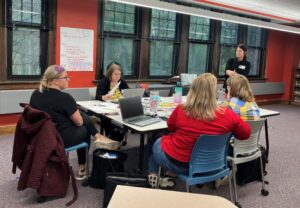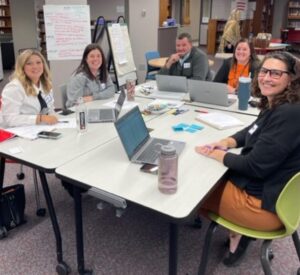The Five S’s of Continuous Improvement: Updates form NYKids’ COMPASS Partner Oppenheim-Ephratah St. Johnsville (OESJ)
by Kristen C. Wilcox, Meg Rooney, and Lisa Graham-Donato
The growing body of research on what supports school improvement initiatives points to a few key considerations. One iteration of these considerations was discussed in the recently published Foundational Handbook on Improvement Research in Education. In the Handbook, authors Hinnant-Crawford and Anderson, articulate the “5S Framework for problem identification in improvement focused education research.”
The 5S framework outlines the following considerations and associated questions when engaging in school improvement:
- Significance – Associated Question: Why are we doing this work?
- Source – Associated Question: What is causing the problem?
- Substantive Focus – Associated Question: How should/could we address the problem?
- Scale – Associated Question: Whose knowledge and expertise do we need to solve this problem?
- Scope – Associated Question: Where does this problem live? Is it unique to a department, school, district or is it a shared problem?
The research informing the 5S framework as well as NYKids’ COMPASS research, has indicated the importance of teams of educators working hand-in-hand with school leaders in using routines for goal-setting and data interpretation to inform evidence-based continuous improvement.

NYKids and partners’ COMPASS teams at Oppenheim-Ephratah St. Johnsville (OESJ) and Wynantskill school districts engaged in just such teamwork in our October 31st and November 2nd COMPASS “check the pulse” meetings. We share some highlights through the 5s framework.
Oppenheim-Ephratah St. Johnsville: Student Engagement on the Radar
Significance – Associated Question: Why are we doing this work?
At OESJ student engagement was a central part of the discussion among the COMPASS team members as they considered the importance of student safety, consistent attendance, and the need for elementary students to have positive experiences at recess.
Source – Associated Question: What is causing the problem?
 The elementary team identified the need for
The elementary team identified the need for
- shared expectations with leadership and support staff about the value of recess,
- increased knowledge of developmentally appropriate practices & conflict resolution practices, and
- appropriate spaces and materials for recess both indoors and outdoors.
The middle school/high school team identified needs for
- staffing shifts to increase safety, and
- better systems to track attendance and use attendance data to ensure all students are receiving as much opportunity for learning and socialization as possible.
Substantive Focus – Associated Question: How should/could we address the problem?
The elementary team decided that they will continue to analyze data such as student surveys, a behaviorist professional’s data, and seek out more best practices to improve recess time.
The secondary team will seek a meeting with school leaders to discuss access to student attendance data and do a survey to get student and family input on high priority areas of concern for student safety. They also generated a potential new goal focused on increasing student safety before and after school.
Scale – Associated Question: Whose knowledge and expertise do we need to solve this problem?
For the elementary school team, tapping an expert on positive recess experiences has already been done and NYKids recommends the NYS Social-Emotional Learning Framework as a potential helpful resource to explore for more ideas.
The NYKids team recommended turning to positive outlier school research and specifically the Whitesboro Middle School case study for ideas about reducing chronic absenteeism.
Most important with regard to this question is tapping the wealth of knowledge and ideas already available in OESJ’s own school and community.
Scope – Associated Question: Where does this problem live? Is it unique to a department, school, district or is it a shared problem?
Raising the bar to support child and youth physical health, social emotional learning opportunities, mental health, and academic success are shared across schools and the community. Solutions for these problems reside both inside and outside the school walls implicating the importance of getting input, ideas, and support from a diverse array of stakeholders in the OESJ community.
As always, we welcome all your questions or feedback at nykids@albany.edu and reach out if you are interested in direct support for your improvement efforts. Please follow us on Facebook, X, Instagram, and LinkedIn.
